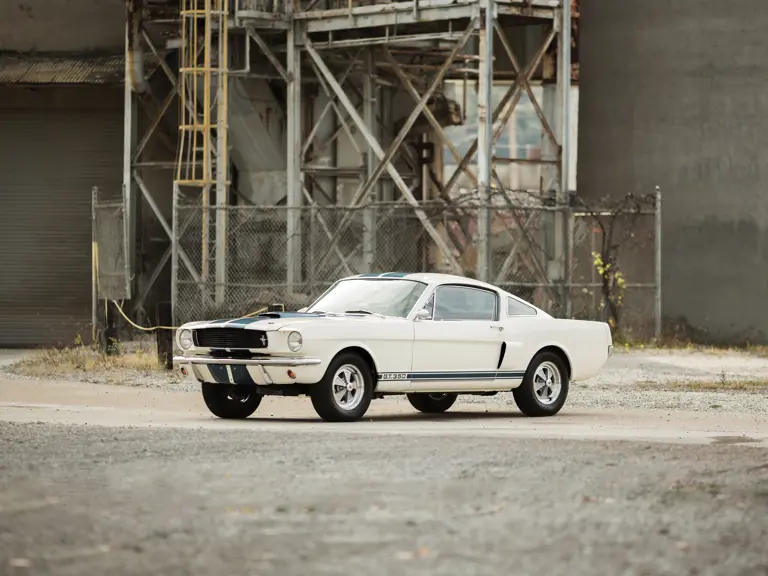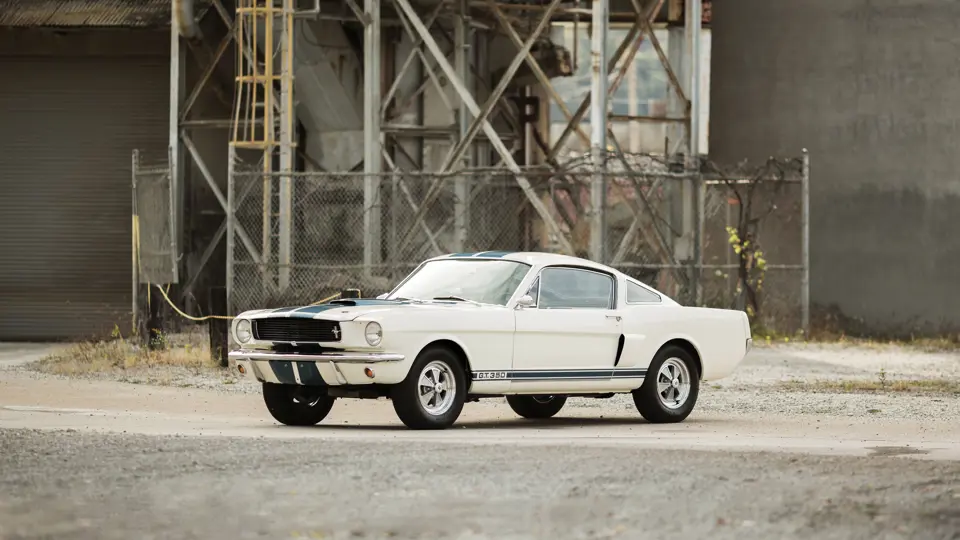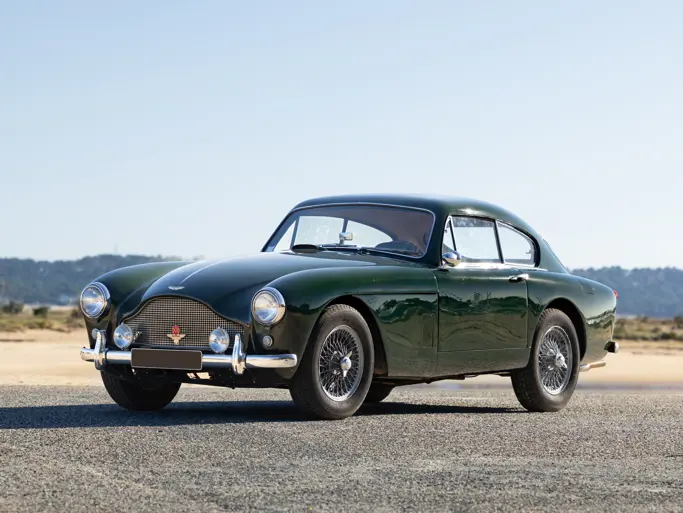Showing few visual differences from their 1965 counterparts, the 1966 Shelby GT 350 was a world apart from the stock Ford Mustang 2 + 2 Fastback (that listed for approximately $3,500) and the Shelby-modified version. Standard high performance, 271 horsepower Mustangs were delivered to the Shelby American factory near Los Angeles International Airport, where they were rebuilt to Shelby GT 350 specifications. Wide-base wheels and speed-rated Goodyear Blue Streak tires were fitted, as well as trailing arms at the rear, a one-inch anti-sway bar at the front, and Koni shock absorbers all around. The front suspension geometry was altered, the steering speeded up, and a chassis brace installed across the engine compartment between the upper shock mounts. The front brakes were 11-inch Kelsey-Hayes discs with heavy-duty pads, while the rears were 10- X 3-inch drums with sintered metallic linings and three-quarters of an inch wider than the stock offering. Finned, cast aluminum rocker covers and sump are bolted on, as is a high-riser intake manifold and a big four-barrel carburetor with 1.7-inch venturis and center-pivot floats to prevent cut outs while cornering at speed. This, along with steel fabricated headers and low-restriction mufflers boost the horsepower figure to a stout 306-hp from the 289-cid V-8 engine. Final touches included the rear brake scoops, a new hood with a large and beneficial air scoop with NASCAR-style pin locks, Plexiglas rear quarter windows in place of the regular Mustang fastbacks vent panels, a tidied-up grille with the Mustang emblem offset to the driver’s side and the Le Mans stripes that easily makes the car identifiable in mere moments. There were countless options for racing the GT 350 in the SCCA’s B-Production category, many of which were proved in competition by the Cobra 289 and Ford’s GT 40, both of which also used the basic Fairlane V-8. In 1965, in their first season of racing, the GT 350s won several National Championships, including the final playoff at Daytona.
In 1965, staff of one of the leading car magazines of the period, described the Shelby as a brand new, vigorously driven racecar, and likened it to a World War II fighter plane. For 1966 the car was considerably refined, though it was still well-known as a tough, “for-men-only” machine that required strong arms to turn the steering wheel, strong legs to push the pedals, and strong kidneys to survive the ride. The exhaust layout for the1966 version was changed in that the old NASCAR-style exit before the rear wheels had been changed to terminating behind the rear axle and helped with a 1965 area of concern where exhaust fumes were easily introduced into the cockpit.
The changes for 1966 made the Shelby GT 350 more civilized, but did nothing to detract from the fact that this was a great sports car in the classic tradition. Nothing but good things comes to the driver of a GT 350. Its cornering ability is a fantastic mixture of the beast getting the better of you, and you keeping hold of the tiger’s tail. The taut suspension, well-controlled geometry and big tires suffice to keep the car on the road at (what some would say) insane speeds, and when it does start to slide, you can wrestle the drift in the direction of your choice. With fairly neutral steering characteristics it is a car that can be controlled by an accomplished driver with their right foot. If steering with your right foot becomes a bore, you can always wrench the steering wheel to make the front end perform appropriate maneuvers.
The car offered here, SFM6S375, has been with the same owner since 1974 and was beautifully restored in 1994. According to the Shelby American Automotive Club Registry, this particular car was ordered on November 19, 1965 and shipped to The Marshall Motor Co. in Mayfield Heights, Ohio on November 30, 1965 where they were invoiced $3,547 plus an additional $214 for the Shelby/Cragar five-spoke wheels, plus $50 for Le Mans stripes, plus $40 for rear seat and $70.25 freight for a total of $3,921. 25. It is stated that Marshall repaired the rear seat latch on January 4, 1966 with zero miles and on January 19, 1966 installed the side stripes which were missing when the car was delivered. This was also completed with zero miles on the odometer.
The current owner is the first owner listed; the Shelby has been with this dedicated enthusiast for the past 40 years. This Shelby is a Wimbledon White car, has a factory four-speed manual transmission, air conditioning, radio, wood-rimmed steering wheel and power brakes. It is stated to have approximately 34,000 original miles, still retains its original engine, has its factory sheetmetal and the Shelby/Cragar wheels are also the originals.
The GT 350 is fondly thought of as a brute of a car. There is nothing subtle about them at all. It will undoubtedly assure its owner of much attention whenever it is driven down the street, revved at a stoplight, or displayed at any venue where superlative cars are featured. All told, 1,365 of these menacing machines were provided to the buying public in 1966.



 | Fort Lauderdale, Florida
| Fort Lauderdale, Florida


